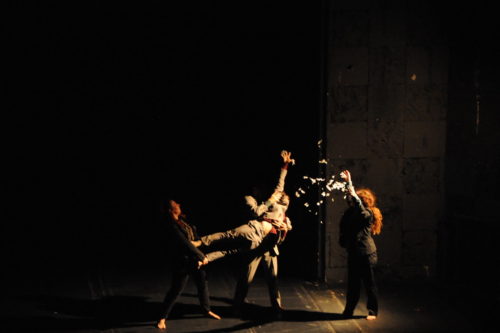
Productions
La Settima
Choreography by Nicoletta Cabassi and Claudio Malangone

BORDERLINE DANZA COMPANY / NICOLETTA CABASSI / BTT
LA SETTIMA
Music Ludwig van Beethoven – The Seventh Symphony piano arrangement by Franz Liszt
Choreography Nicoletta Cabassi III & IV movement
Claudio Malangone I & II movement
Dancers: Balletto Teatro di Torino III & IV / I & II Borderlinedanza
Regarding the Symphony No.7, Wagner stated: “This symphony is the apotheosis of dance. It is dance in its maximum essence, the action of the body translated into ideal sounds.”
Rhythm penetrates every section of the composition and becomes its generating category. It gives shape to ideas, innervates, and enlivens its melody to the point of plastically transforming the themes, and concentrates or disperses the motifs between the various tonal ranges.
But above all, this is an “act of thought” involving choreographers Nicoletta Cabassi and Claudio Malangone, together with the artistic director of BTT Viola Scaglione.
Their ideas and considerations, both human and artistic, were placed side by side to bring to life a single body of work with Beethoven’s 7th Symphony as object and theme.
Nicoletta Cabassi: “In this score, between each modulation and chord, the composer instils a sense of security, courage, determination, openness to life, faith in the future. And it is exactly what we are missing today. With both a collective and an individual plot, we try to sound out and investigate the concept of “common happiness” in that crucial moment preceding happiness, be it expected or unexpected. And we will do it by suggesting the choreographic plot as the language of negotiation between the individual and plurality within an ideal community, and by asking ourselves questions on the fundamental role that artistic heritage plays in the contemporaneity.”
Claudio Malangone: “The starting points for this creation are the idea of a journey and those transformations an environment and a body are subjected to along the way, just as it happens for the musical score of the 7th Symphony, by capturing the metamorphoses and contradictions inherent to it. A theoretical and physical path dictated by our ability to know and observe ourselves, to be open to dialogue and confrontation in to retrieve a community dialectic, to re-invent and re-discover ourselves inside an organisational and creative fluidity, in which each person’s strategies become a support to artistic research. A journey that takes inspiration from between what we see and what we imagine, leading to an intimate and welcoming place, digging in the complexity of the social organism to show the invisible behind what is visually palpable, opening the space to build a dramaturgy, the essence of which is not to be identified in the contrast between the four characters, but in the comparison between stage and audience.”